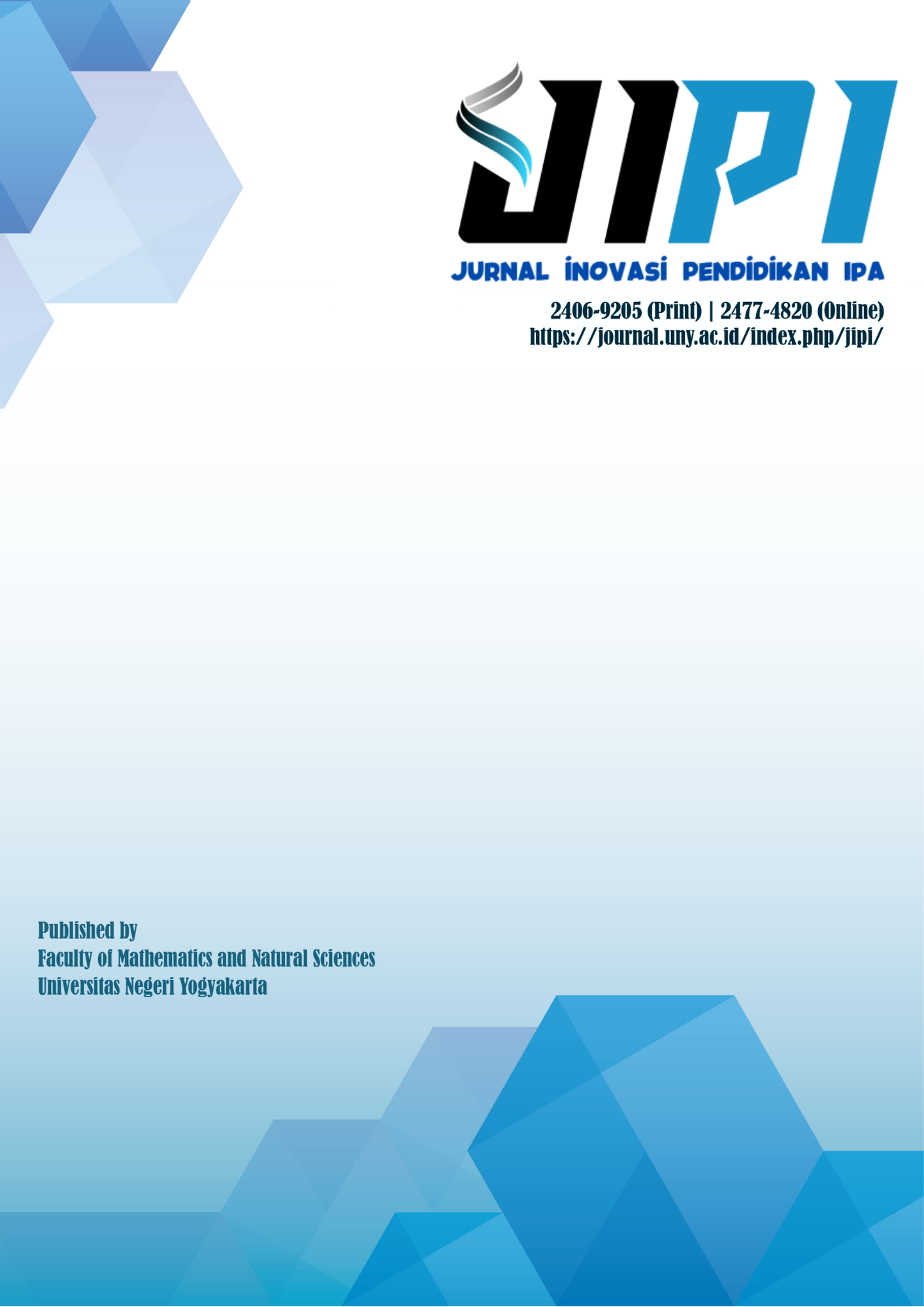An Analysis of Physics Learning Motivation Using a Case Study-Based Learning Motivation Assessment Instrument
DOI:
https://doi.org/10.21831/jipi.v10i2.75815Keywords:
assessment, case study, motivationAbstract
Learning motivation is important to support successful learning. This article discusses the analysis of high school learning motivation and the development of a learning motivation assessment instrument. This is due to the lack of instrument development based on case studies. It used a case study-based instrument developed with the 4D model. The study results show that the developed learning motivation assessment instrument is valid and reliable. Through this instrument, students' motivation to learn physics can be classified into low, medium, and high. Through analysis, the treatment of each group can be seen so that learning motivation can increase. At the low level, it can be increased by varying learning models, learning resources, and learning media. While for the second level, namely the average, it needs to be increased again by building more intense communication with students. For the highest level, it can be in the form of learning with more interesting learning resources and physics assignments.
References
Aiken, L. R. (1985). Three Coefficients for Analyzing the Reliability and Validity of Ratings. Educational and Psychological Measurement, 45(1), 131–142. https://doi.org/10.1177/0013164485451012
Aldila, F. T., Matondang, M. M., & Wicaksono, L. (2020). IDENTIFIKASI MINAT BELAJAR SISWA TERHADAP MATA PELAJARAN FISIKA DI SMAN 1 MUARO JAMBI. JOURNAL OF SCIENCE EDUCATION AND PRACTICE, 4(1), 22–31. https://doi.org/10.33751/jsep.v4i1.2827
Arikunto, Suharsimi. (2021). Dasar-Dasar Evaluasi Pendidikan Edisi 3 - Google Books. In Bumi Aksara.
Arimbawa, I. K., Suarjana, I. M., & Arini, N. W. (2017). Pengaruh Penggunaan Ice Breaker Terhadap Motivasi Belajar Siswa Sekolah Dasar. E-Journal PGSD Universitas Pendidikan Ganesha, 1.
Choerul Anwar Badruttamam. (2018). Peran Orang Tua dalam Meningkatkan Motivasi Belajar terhadap Peserta Didik. JURNAL CENDEKIA, 10(02). https://doi.org/10.37850/cendekia.v10i02.66
Dewi, W. A. F. (2020). Dampak COVID-19 terhadap Implementasi Pembelajaran Daring di Sekolah Dasar. EDUKATIF : JURNAL ILMU PENDIDIKAN, 2(1). https://doi.org/10.31004/edukatif.v2i1.89
Haerullah, H., & Elihami, E. (2020). Dimensi Perkembangan Pendidikan Formal dan Non Formal. Jurnal Edukasi Nonformal, 1(1).
Janti, S. (2014). Analisis Validitas dan Reliabilitas Dengan Skala Likert Terhadap Pengembangan SI/TI Dalam Penentuan Pengambilan Keputusan Penerapan Strategic Planning Pada Industri Garmen. SNAST: Prosiding Seminar Nasional Aplikasi Sains & Teknologi 2014, November.
Maduretno, T. W., & Andrini, V. S. (2018). IMPLEMENTASI PENDIDIKAN KARAKTER PADA MODEL PROJECT BASED LEARNING MELALUI SUMBER BELAJAR SMARTPHONE. Jurnal Dharma Pendidikan, 13(April).
Pristiwanti, D., Badariah, B., Hidayat, S., & Dewi, R. S. (2022). Pengertian Pendidikan. In Jurnal Pendidikan Dan Konseling (JPDK) (Vol. 4, Issue 6).
Pujiyanto, T. I., Manika, H. S. L., & Dewi, R. (2023). The effect of Professional Nursing Practice Model Training (MPKP) with the implementation of Pillar IV Nursing Care Delivery System (Pillar IV NCDs) at a Hospital in Kotamobagu, Indonesia. GHMJ (Global Health Management Journal), 6(1). https://doi.org/10.35898/ghmj-61934
Putria, H., Maula, L. H., & Uswatun, D. A. (2020). Analisis Proses Pembelajaran dalam Jaringan (DARING) Masa Pandemi Covid- 19 Pada Guru Sekolah Dasar. Jurnal Basicedu, 4(4), 861–870. https://doi.org/10.31004/basicedu.v4i4.460
Rachmah, L. L., Sunaryanto, S., & Yuniastuti, Y. (2019). Pengaruh Lingkungan Keluarga dan Fasilitas Belajar pada Prestasi Belajar IPS Siswa Ditinjau dari Motivasi Belajar. Jurnal Pendidikan: Teori, Penelitian, Dan Pengembangan, 4(9). https://doi.org/10.17977/jptpp.v4i9.12701
Safitri, E., Wawan, Setiawan, A., & Darmayanti, R. (2023). Eksperimentasi Model Pembelajaran Problem Based Learning Berbantuan Kahoot Terhadap Kepercayaan Diri Dan Prestasi Belajar. Jurnal Penelitian Tindakan Kelas, 1(2). https://doi.org/10.61650/jptk.v1i2.154
Saharsa, U., Qaddafi, M., & Baharuddin. (2018). Efektivitas Penerapan Model Pembelajaran Problem Based Learning Berbantuan Video Based Laboratory Terhadap Peningkatan Pemahaman Konsep Fisika. Jurnal Pendidikan Fisika, 6(2).
Sari, N., Sunarno, W., & Sarwanto, S. (2018). ANALISIS MOTIVASI BELAJAR SISWA DALAM PEMBELAJARAN FISIKA SEKOLAH MENENGAH ATAS. Jurnal Pendidikan Dan Kebudayaan, 3(1), 17–32. https://doi.org/10.24832/jpnk.v3i1.591
Sekarini, Y. P., Adiningsih, E. T., Anisa, Z. L., & Setiaji, B. (2021). A New Alternative to Measure Students' Analytical Thinking Skill: A Validity Test for Mechanics Problem Based Learning Module. Proceedings of the 7th International Conference on Research, Implementation, and Education of Mathematics and Sciences (ICRIEMS 2020). https://doi.org/10.2991/assehr.k.210305.090
Stafford, M., Black, S., Shah, I., Hardy, R., Pierce, M., Richards, M., Wong, A., & Kuh, D. (2013). Using a birth cohort to study ageing: Representativeness and response rates in the National Survey of Health and Development. European Journal of Ageing, 10(2). https://doi.org/10.1007/s10433-013-0258-8
Sudibyo, E., Jatmiko, B., & Widodo, W. (2017). PENGEMBANGAN INSTRUMEN MOTIVASI BELAJAR FISIKA: ANGKET. Jurnal Penelitian Pendidikan IPA, 1(1), 13. https://doi.org/10.26740/jppipa.v1n1.p13-21
Sugiyono. (2010). Metode Penelitian Pendidikan Pendekatan Kuantitatif, kualitatif, dan R&D. Alfabeta.
Sukardi, T. (2011). Studi Penelusuran Lulusan S1 Kependidikan Fakultas Teknik Universitas Negeri Yogyakarta. Jurnal Pendidikan Teknologi Dan Kejuruan UNY, 20(2).
Susetyarini, Rr. E., Permana, T. I., Gunarta, G., Setyawan, D., Latifa, R., & Zaenab, S. (2019). Motivasi dan tanggung jawab siswa dalam pembelajaran berbasis proyek, sebuah penelitian tindakan kelas. Jurnal Inovasi Pendidikan IPA, 5(1), 1–9. https://doi.org/10.21831/jipi.v5i1.22293
Sutiyatno, S. (2018). The effect of teacher's verbal communication and non-verbal communication on students' english achievement. Journal of Language Teaching and Research, 9(2). https://doi.org/10.17507/jltr.0902.28
Thiagarajan, Dorothy, S. S., & Melvyn, I. S. (1974). Instructional Development for Training Teachers of Exceptional Children: Center for Innovation in. Research and Development, Mc.
Utomo, T., Wahyuni, D., & Hariyadi, S. (2014). Pengaruh Model Pembelajaran Berbasis Masalah (Problem Based Learning) Terhadap Pemahaman Konsep dan Kemampuan Berpikir Kreatif Siswa (Siswa Kelas VIII Semester Gasal SMPN 1 Sumbermalang Kabupaten Situbondo Tahun Ajaran 2012/2013) (The Effect of Problem-Ba. JEUJ: Jurnal Edukasi, 1(1).
Waluyo, E., & Nuraini. (2020). Pengembangan Desain Instruksional Model Inquiry Learning Terintegrasi TPACK untuk Meningkatkan Kemampuan Pemecahan Masalah. Jurnal Pengembangan Pembelajaran Matematika, 3(1), 1–11. https://doi.org/10.14421/jppm.2021.31.1-11
Widyaningtyas, A., & Radiyono, Y. (2013). Peran Lingkungan Belajar Dan Kesiapan Belajar Terhadap Prestasi Belajar Fisika Siswa Kelas X Sekolah Menengah Atas Negeri 1 Pati. Jurnal Pendidikan Fisika, 1(1).
Downloads
Published
How to Cite
Issue
Section
Citation Check
License
The authors submitting a manuscript to this journal agree that, if accepted for publication, copyright publishing of the submission shall be assigned to Jurnal Inovasi Pendidikan IPA (JIPI). However, even though the journal asks for a copyright transfer, the authors retain (or are granted back) significant scholarly rights.
Jurnal Inovasi Pendidikan IPA by http://journal.uny.ac.id/index.php/jipi/index is licensed under a Creative Commons Attribution-ShareAlike 4.0 International License.










